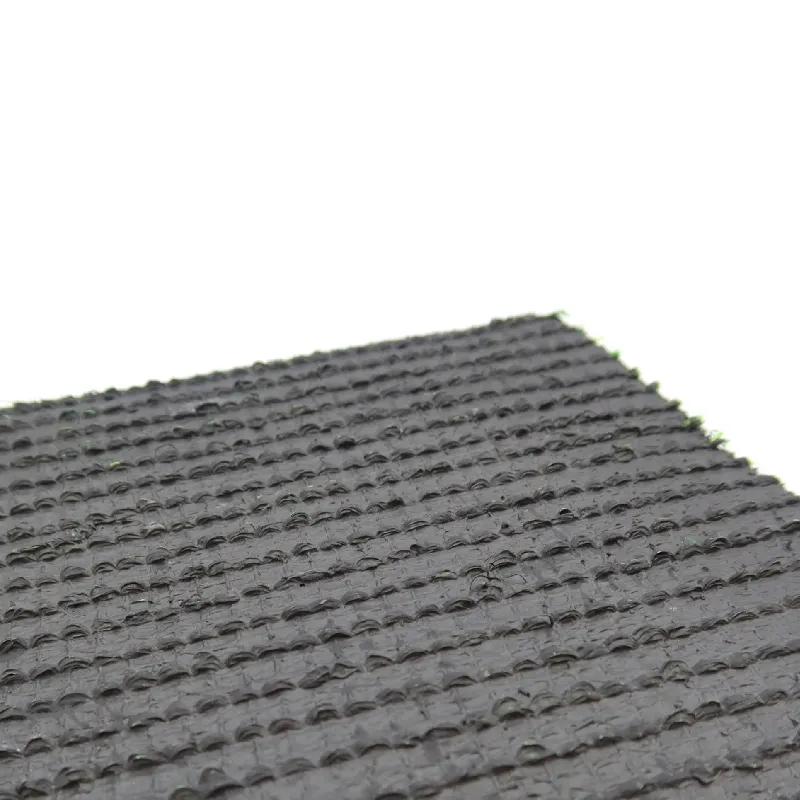
- Afrikaans
- Arabic
- Belarusian
- Bengali
- Czech
- Danish
- Dutch
- English
- Esperanto
- Estonian
- Finnish
- French
- German
- Greek
- Hindi
- Hungarian
- Icelandic
- Indonesian
- irish
- Italian
- Japanese
- kazakh
- Rwandese
- Korean
- Kyrgyz
- Lao
- Latin
- Latvian
- Malay
- Mongolian
- Myanmar
- Norwegian
- Persian
- Polish
- Portuguese
- Romanian
- Russian
- Serbian
- Spanish
- Swedish
- Tagalog
- Tajik
- Thai
- Turkish
- Turkmen
- Ukrainian
- Urdu
- Uighur
- Uzbek
- Vietnamese
sports field artificial turf
Nov . 22, 2024 10:37 Back to list
The Rise of Artificial Turf in Sports Fields A Comprehensive Overview
In the world of sports, the quality of the playing surface can significantly impact the performance of athletes and the enjoyment of spectators. Over recent years, artificial turf has gained remarkable popularity as a viable alternative to natural grass in sports fields. This transformation not only alters the aesthetic appeal of playing venues but also presents a multitude of practical advantages and challenges that merit exploration.
The Evolution of Artificial Turf
Artificial turf is not a new concept; its origins can be traced back to the 1960s, with the introduction of the first synthetic playing surface, often referred to as AstroTurf. Initially popularized in the realm of American football, synthetic surfaces have since expanded their influence across a wide array of sports, including soccer, baseball, lacrosse, and field hockey. The development of advanced materials and technology has led to the emergence of more sophisticated turf varieties that replicate the feel and performance characteristics of natural grass while mitigating some of the challenges associated with it.
Advantages of Artificial Turf
One of the foremost benefits of artificial turf is its durability. Unlike natural grass, which can easily become worn and damaged, synthetic surfaces are designed to withstand intense usage and varied weather conditions. This longevity translates into lower maintenance costs, as artificial turf does not require regular mowing, watering, or fertilization. As a result, facilities can allocate these savings to other essential areas, such as enhancing player facilities or supporting community sports programs.
Another significant advantage is the consistency of play that artificial fields provide. Synthetic surfaces offer uniformity in texture and traction, which leads to improved safety for athletes. Natural grass fields can suffer from uneven patches, muddy areas, or hard soil, all of which can contribute to injuries. Moreover, artificial turf is engineered to drain efficiently, ensuring that games can proceed even after heavy rainfall, minimizing cancellations and disruptions.
From an environmental perspective, some proponents argue that artificial turf conserves water resources, particularly in drought-prone areas. The elimination of irrigation systems not only helps conserve water but also reduces the need for chemical treatments commonly applied to natural grass, including pesticides and herbicides.
sports field artificial turf

Challenges and Controversies
Despite its advantages, the implementation of artificial turf is not without controversies. One of the primary concerns revolves around the materials used in the construction of synthetic fields, particularly the infill materials like crumb rubber. Studies have raised questions about the safety of these materials and their potential health risks to athletes. While regulatory bodies continually assess and monitor these concerns, some players and parents remain wary, advocating for continued research into the long-term effects of exposure.
Another issue to consider is the environmental impact of the manufacturing and disposal of artificial turf. While they may save water and chemicals during their lifespan, the production of synthetic surfaces often involves plastics and other non-biodegradable materials, leading to an ecological footprint that can’t be overlooked. Furthermore, once the turf reaches the end of its life cycle—usually around 8-10 years—it presents challenges in terms of disposal and recycling, as these materials can contribute to landfill waste.
The Future of Sports Fields
Looking ahead, the future of sports fields is likely to witness innovations that marry the benefits of both artificial turf and natural grass. Hybrid systems that combine both surfaces provide a solution to some of the shortcomings currently associated with synthetic fields. Additionally, ongoing technological advancements are likely to yield improved materials that address health concerns while enhancing performance characteristics.
Furthermore, as the push for sustainable development and environmental awareness continues to grow, there is an increasing demand for eco-friendly alternatives in the realm of artificial turf. Innovations such as bio-based infills, compostable materials, and recycling initiatives are paving the way toward a more sustainable approach.
Conclusion
As artificial turf continues to reshape the landscape of sports fields, it becomes clear that this evolution carries both commendable advantages and significant challenges. The choice between artificial and natural surfaces will inevitably depend on specific contexts, goals, and values of schools, communities, and sporting organizations. By fostering informed discussions and continuing to innovate, the future of sports fields can align more closely with athlete safety, environmental responsibility, and the integrity of the sport itself.
-
The Benefits of Artificial Turf for Indoors
NewsJul.15,2025
-
How Artificial Grass Suppliers Ensure Quality Products
NewsJul.15,2025
-
Artificial Grass and Pets: A Space for Relaxation
NewsJul.08,2025
-
Balcony & Outdoor Decoration with Artificial Grass
NewsJul.08,2025
-
Best Indoor Artificial Grass for Home
NewsJul.07,2025
-
Best Pet Turf for Dogs: Safe & Durable Artificial Grass Options
NewsJul.07,2025
Products categories









